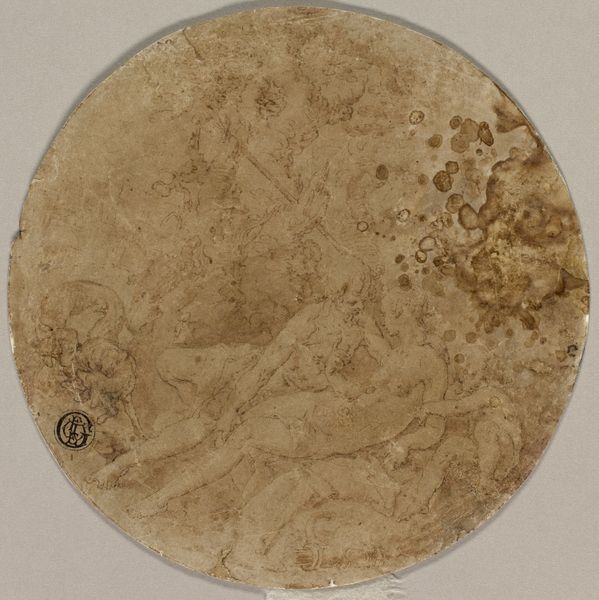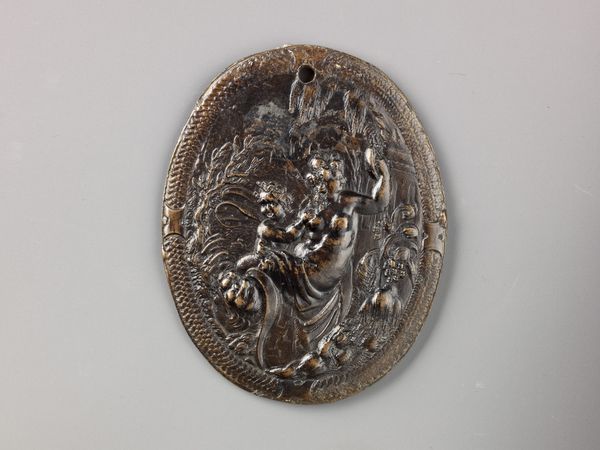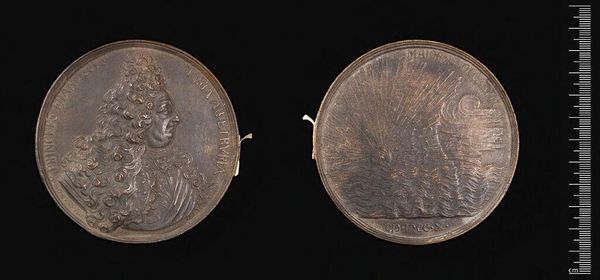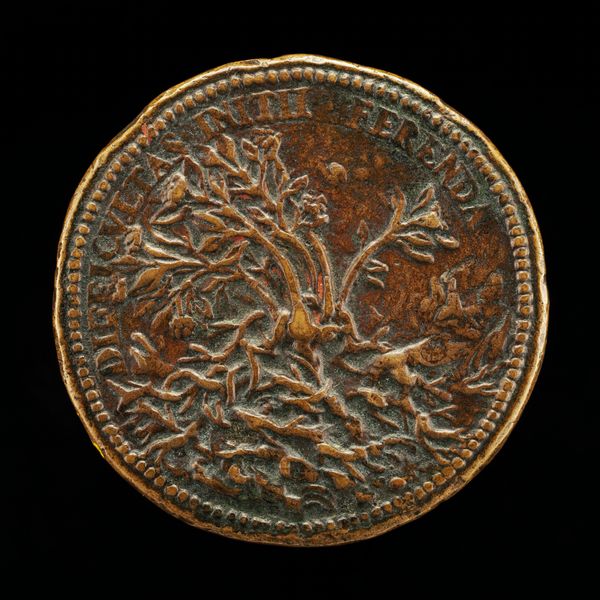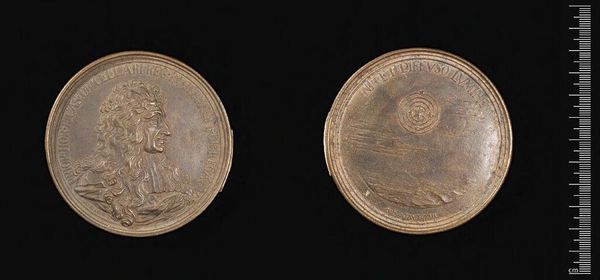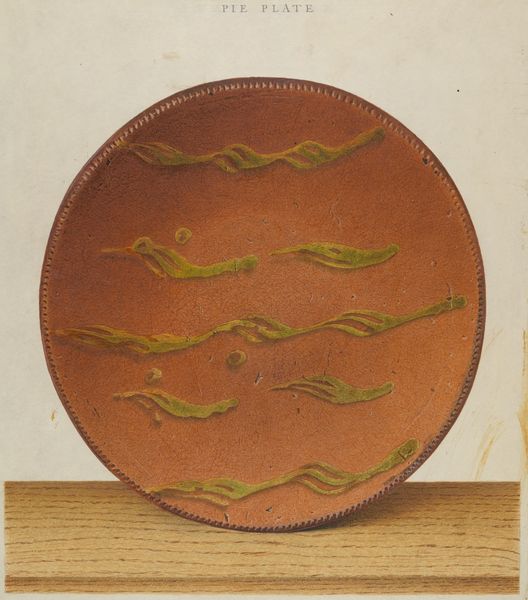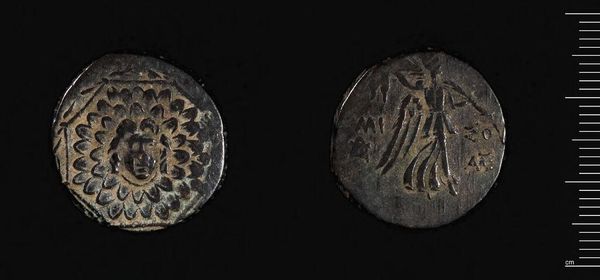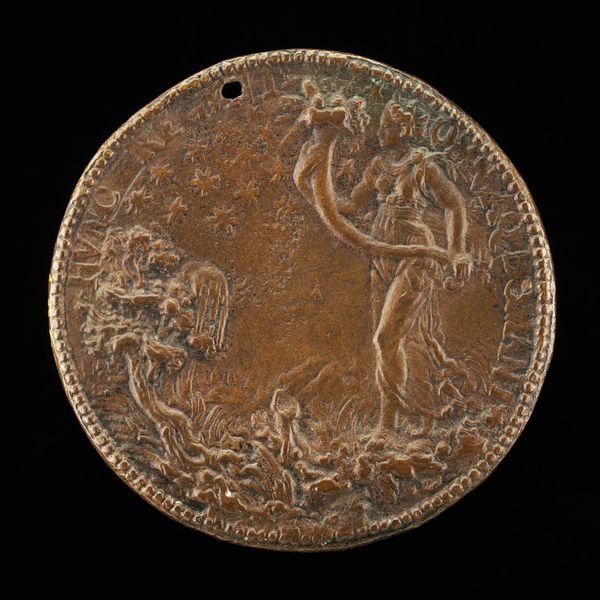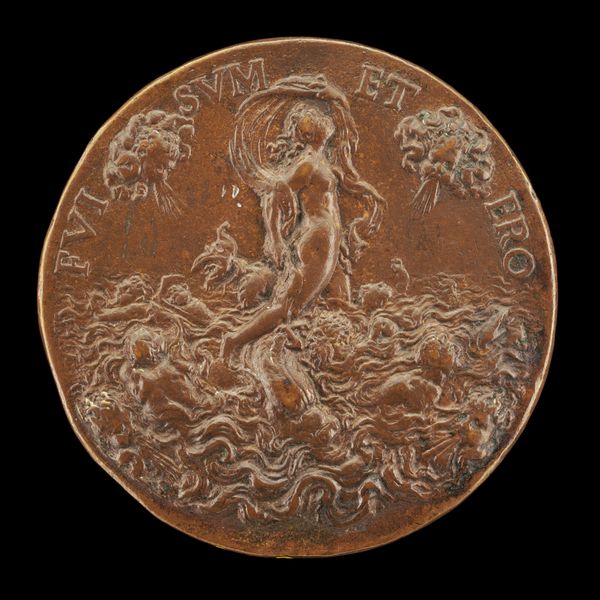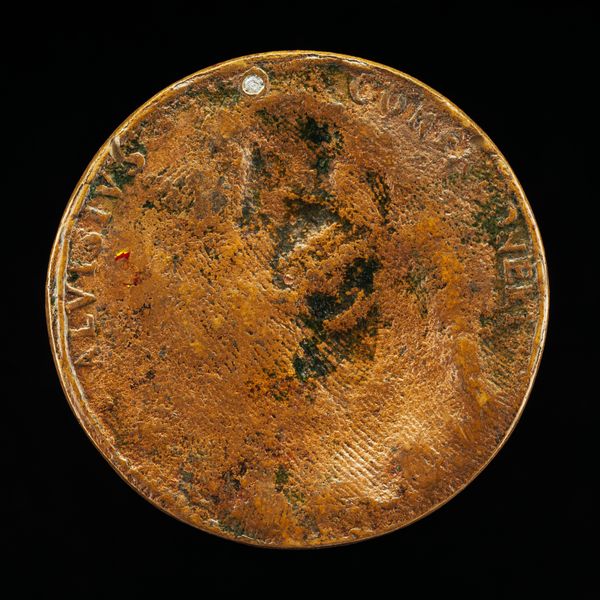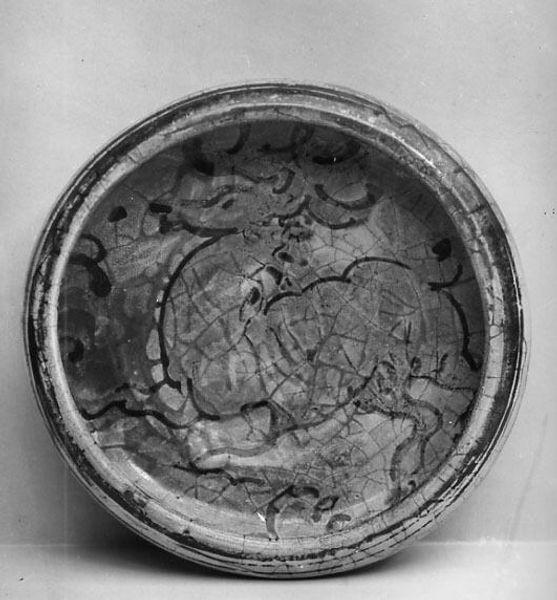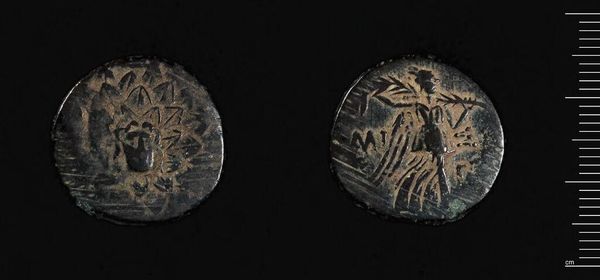
Ink Tablet with Thousand-Year Fungus Motif 1871 - 1933
0:00
0:00
drawing, carving, print, relief, ink, sculpture, woodcut
#
drawing
#
carving
# print
#
sculpture
#
asian-art
#
relief
#
landscape
#
ink
#
geometric
#
sculpture
#
woodcut
Dimensions: Diam. 4 1/2 in. (11.4 cm)
Copyright: Public Domain
Curator: I am instantly transported by the quiet strength of this piece, almost like staring into an ancient mirror. Editor: This is an Ink Tablet with Thousand-Year Fungus Motif, likely produced between 1871 and 1933, placing it in the late Qing Dynasty or early Republican period. It is located at the Metropolitan Museum of Art in New York. Curator: Thousand-Year Fungus... such an evocative title. It feels like the landscape whispers secrets of longevity. Is this motif often found in works of this period? Editor: The "thousand-year fungus," or lingzhi mushroom, symbolizes immortality in Daoist and East Asian art. It appears frequently during times of political turmoil. Its resilience and longevity were powerful metaphors during eras marked by wars, imperial decline, and social change. Artists sought ways to evoke cultural continuities during these periods. Curator: That contextual framing helps it to resonate even more deeply! The precision of the carving – it looks like the lines were pulled from the very air. The light dances across the relief in the tree, like a meditation. Editor: Indeed! Think about the act of creating this artwork: it is not merely decorative but emerges from deep social meanings linked to the very role of the artist in society. These tablets served an aesthetic and deeply political function; as a visual reminder of resistance against disorder and collapse. Curator: I see now; it is both delicate and declarative! It reminds us how art becomes a witness, a silent carrier of stories through time. Like echoes from ancestors; art can quietly heal as much as powerfully critique. Editor: Precisely, the artist Cheng Junfang reminds us that individual artistic expression becomes an archive capable of both challenging and affirming cultural values when deployed in periods of intense political change. Curator: Considering this piece, then, asks that we remain alive to history... but maybe even more importantly, committed to futurity. Editor: Exactly. By looking at art in all of its historical specificity, it reveals itself not as inert and fixed in time, but capable of moving beyond it, always retaining the power to speak in ways that feel freshly relevant.
Comments
No comments
Be the first to comment and join the conversation on the ultimate creative platform.
